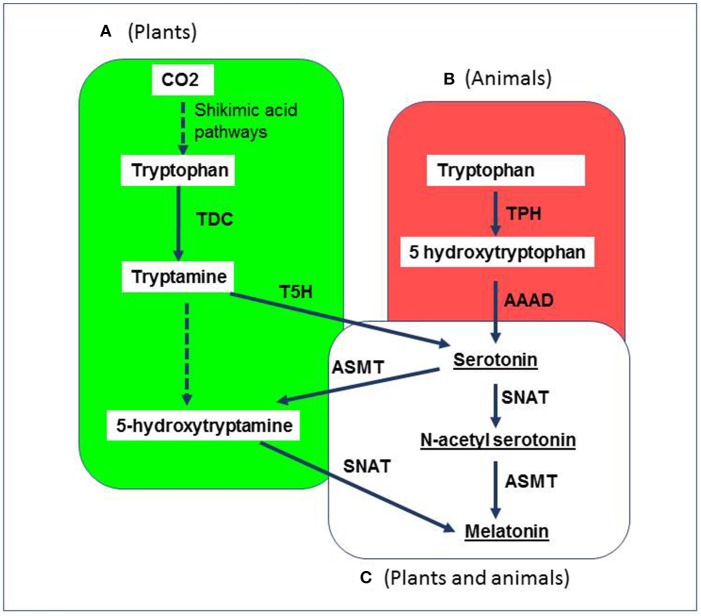Figure 3.
Simplified representation of the biosynthetic pathways of melatonin in plants and animals. Tryptophan is the common precursor of melatonin in all species. (A) In plants (green), melatonin is synthesized under two pathways: (1) tryptophan-tryptamine-serotonin-N-acetyl serotonin-melatonin pathway (under normal growth conditions); (2) tryptophan-tryptamine-serotonin-5-methoxytryptamine-melatonin pathway (upon senescence, when plants produce large amounts of serotonin); (B) In animals (red); tryptophan is converted in serotonin via hydroxytryptophan; (C) In both plants and animals (white), melatonin production from serotonin is the same two-step process and includes the conversion of serotonin to N-acetylserotonin by the rate-limiting enzyme AA-NAT (arylalkylamine N-acetyltransferase) also called as serotonin N-acetyltransferase followed by the conversion of N-acetylserotonin to melatonin by acetylserotonin O-methyltransferase. CO2, carbon dioxide; TPH, tryptophan hydroxylase; AAAD, aromatic amino acid decarboxylase; SNAT, serotonin N-acetyltransferase; ASMT, N-acetylserotonin O-methyltransferase; TDC, tryptophan decarboxylase; T5H, tryptamine 5-hydroxylase.

